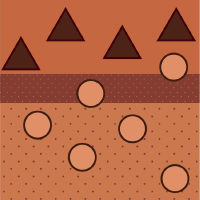Topic Menu
► Topic MenuTopic Editors

Novel Membranes for Energy Harvesting and Pollution Control
Topic Information
Dear Colleagues,
Due to the increasing energy demands and environmental problems caused by the improper use of energy, people urgently need clean energy to ensure the sustainable development of society. Researchers have studied a variety of energy storage (e.g., capacitors and batteries) and conversion devices (e.g., solar cells and fuel cells) to collect/convert light energy, chemical energy, mechanical energy, etc. for various applications. One potential approach for green energy collection/conversion is membrane technology, such as membrane-based hydrovoltaic power generation, which can simultaneously realize power generation and pollutant removal. As an important component, the membrane provides an important guarantee for energy conversion and stable operation of the device. Scientists have especially shown interest in new materials with high mechanical/chemical stability, low mass resistance and high energy density. However, the efficient collection/conversion of energy using membranes still faces many challenges, especially when environmental remediation is also considered. This Topic will focus on recent advances in the fabrication, modification and applications of membranes for energy collection/conversion and pollutant removal. The aim is to generate updated knowledge in this field, and to provide guidance for future research.
The topics of interest include but are not limited to the preparation and application of various membranes for energy collection and conversion, such as hydrovoltaic power generation membranes, ion-selective nanostructured membranes, (photo)electrochemical membranes, and biomimetic membranes. Original papers and reviews are welcome.
Prof. Dr. Xianhua Liu
Prof. Dr. Jiafu Shi
Topic Editors
Keywords
- membranes
- energy collection
- pollutant removal
- polymers
- Wastewater Treatment
Participating Journals
| Journal Name | Impact Factor | CiteScore | Launched Year | First Decision (median) | APC |
|---|---|---|---|---|---|

Polymers
|
5.0 | 6.6 | 2009 | 13.7 Days | CHF 2700 |

Membranes
|
4.2 | 4.4 | 2011 | 13.6 Days | CHF 2700 |

Pollutants
|
- | - | 2021 | 21.7 Days | CHF 1000 |

MDPI Topics is cooperating with Preprints.org and has built a direct connection between MDPI journals and Preprints.org. Authors are encouraged to enjoy the benefits by posting a preprint at Preprints.org prior to publication:
- Immediately share your ideas ahead of publication and establish your research priority;
- Protect your idea from being stolen with this time-stamped preprint article;
- Enhance the exposure and impact of your research;
- Receive feedback from your peers in advance;
- Have it indexed in Web of Science (Preprint Citation Index), Google Scholar, Crossref, SHARE, PrePubMed, Scilit and Europe PMC.


